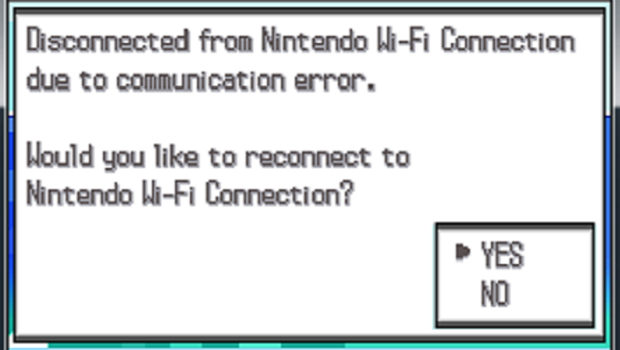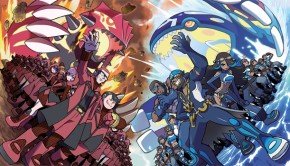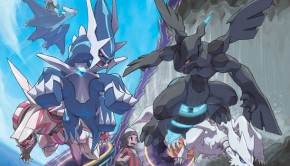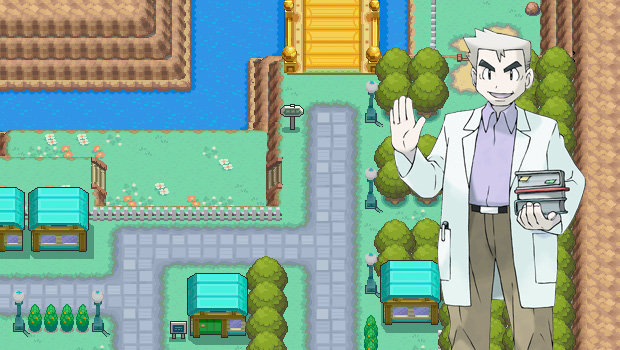How Disconnections Affect WiFi Tournaments and Why That Matters
Another season has passed us by and with it another VGC Friendly. Last year, the 2011 Autumn Friendly allowed players one last chance to use their 2011 teams after the conclusion of the Video Game World Championships in San Diego. Since then, the Pokémon Global Link has held two more Friendlies, one in Spring of 2012 and the just concluded 2012 Autumn Friendly, and The Pokémon Company International has announced plans to hold even more tournaments of the Global Battle Union just like the Friendlies but for actual stakes: Byes in Regionals. TPCi is right to raise the stakes for participation in these events as it increases competition and makes for a more enjoyable tournament for everyone involved (because who really wants to grind through tens of in-game teams?). However, TPCi must address the flaws built into the GBU format before hosting WiFi Tournaments for more than bragging rights: chief amongst those flaws are disconnections.
Disconnections are disruptive to the tournament process and violate good WiFi etiquette, a fact TPCi has acknowledged. In attempting to lessen the impact of disconnections on the 2012 Autumn Friendly, TPCi came up with a formula to identify those who are disconnecting more than the average. To wit, TPCi’s formula looks like this:
(Disconnections) / (Wins + Losses + Disconnections) = Disconnection Rate
For players with a Rating of 1600 or higher:
Excluded from the Rankings if their Disconnection Rate is at least 10 points higher than the overall average across all players.
For players with a Rating of 1599 or lower:
Excluded from the Rankings if their Disconnection Rate is at least 20 points higher than the overall average across all players.
It’s a start. Tying the disqualifying rate to the average is particularly clever as it shows that TPCi recognizes the major complaint of competitors: both parties are faulted when one party disconnects. Ignoring the fact that Game Freak apparently doesn’t have access to the same technology the original Netbattle did and is unable to pinpoint which party disconnected, tying the disconnect rate to the average is the best short term fix for a long term problem.
However, there are still problems with this: it allows disconnections at all. Under this system, disconnections become a part of the game and managing your disconnection rate becomes more important than the actual Pokémon being played. Okay, that’s a bit of an exaggeration, but the point remains: with current disconnection rules, avoiding battles can sometimes be as important as finishing them. Instead of finishing out every battle, like you would be forced to at any VGC event, you now have the option to disconnect and avoid the loss at the risk of increasing your disconnection rate above the average. In practice, assuming that a player plays 100 matches over the course of the tournament (a not unreasonable number if you desire top placement) and you match the average disconnection rate, you have 10 free losses that you can essentially drop. While not a factor at lower rankings, upon hitting the higher 1800s on into the 1900s and 2000s, any loss is potentially disastrous to your final ranking. If you have losses to spare, you’re going to disconnect to protect your rating and your shot at the prizes. What this means is that players who place at the top of the bracket aren’t necessarily the strongest Pokémon battler, though reaching that high a rank does require some Pokémon ability, but instead the players who were smartest about managing their disconnects and protecting their ranking.
Disconnections don’t only affect the competitive side of the WiFi Tournaments, though. For those of us who are less concerned about our standings on the leadership and more concerned about playing some solid Pokémon, win or lose, disconnections sap all of the fun out of these tournaments for even the casual player. Using the data from our (admittedly small) sample of players final standings and records on the forums, the average disconnection rate is around 21% after excluding the highest and lowest disconnection rate. That’s one out of every five battles that doesn’t complete. While you can interpret a disconnection as a forfeit, the fact is that Pokémon is a game where anything can happen on any given turn and players looking to learn how to maintain their advantage and not give any ground will find themselves out of luck one out of every five times as they look to the GBU for practice. In terms of sheer “fun,” there is nothing enjoyable about being disconnected on in the middle of the battle.
Pokémon Black and White 2 have been billed as introducing new, anti-disconnecting features for the GBU. While reports indicate that B/W 2 have introduced a feature that makes people who disconnect wait an hour before they can find a new battle, there are other reports that suggest that the major flaws of the original Black and White GBU remain, most importantly that B/W 2 still cannot tell who disconnected and who was disconnected on. This would actually make the problem even worse for players whose opponents disconnect. In this case, not only would they be taking a hit to their disconnection rate, but they’d also be booted from participating in the tournament for a whole hour through no fault of their own. What’s more, this discouraging factor isn’t reported to apply when the connection is lost, either because internet connection is spotty or your opponent has killed his internet, but only when your opponent actually shuts down and restarts his DS during the battle, leaving us back on square one.
Still, I’m optimistic about the next round of GBU tournaments to be played on Pokémon Black and White 2. Even assuming the worst, waiting an hour in between matches is a strong discouraging factor for those who play more casually and who won’t want to go through the trouble of restarting their router, drastically reducing the average disconnection rate. Ideally, this will mean that players who maliciously disconnect from battles will be easier to catch and reduce the amount of disconnections available to players before they are disqualified, both of which heighten the competition and make the results more legitimate.
Ultimately, if TPCi wants to begin giving out Regionals Byes and potentially Championship Points for WiFi tournaments, they are going to need to address disconnections much more diligently than they currently have. While there are reasons for optimism and TPCi has made baby steps towards addressing the issue of disconnections, the problem is not solved, and fixing that problem only becomes more urgent as TPCi increases the stakes for WiFi tournaments by adding real prizes beyond bragging rights. Until Game Freak is able to upgrade their WiFi capabilities with the ability to detect who has disconnected, however, this is probably about as close to legitimate as TPCi can make the tournaments. TPCi has shown a willingness to learn from past mistakes with the guidance of the community, which makes me hopeful that each WiFi tournament will run more smoothly than the one before. While prizes for WiFi tournaments are perhaps coming a bit too soon, maybe that was the impetus needed to make the community care about the tournaments so we could make them better. Either way, I look forward to a new VGC season both in person and on WiFi.
Do you have thoughts about disconnections in the 2012 Autumn Friendly and their impact on WiFi tournaments as a whole? Let us know what you think in the comments section below.










